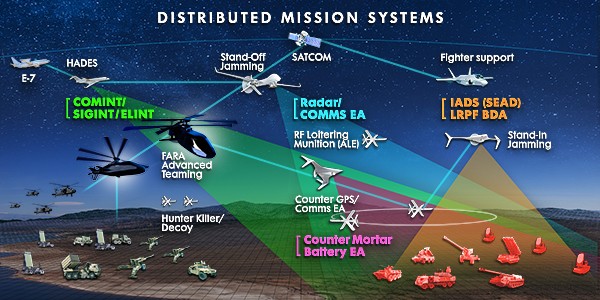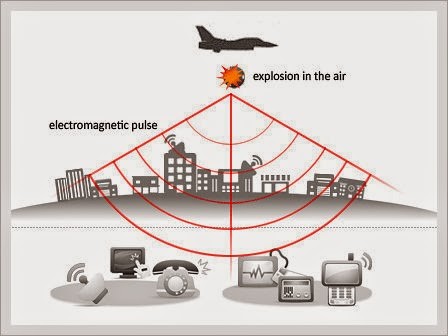
Electronic Warfare (EW) is one of the most sophisticated and strategically relevant disciplines in modern security. In an age dominated by technology, where information superiority can decide the outcome of conflicts and operations, electronic warfare is a key element for controlling the battlefield.
EW is a set of techniques and strategies aimed at dominating the electromagnetic spectrum. This spectrum is used not only for communications, but also for detection, surveillance, and military targeting. Through advanced tools, the main objective is to protect one’s own systems, disrupt enemy systems, or even manipulate transmitted information to gain a tactical advantage.
With the continuous development of technologies such as radar, satellite communications, drones, and advanced sensors, electronic warfare has evolved into invisible competition. This war is fought with radio waves, microwaves, and electromagnetic pulses. Its applications range from defending critical infrastructure to neutralizing imminent threats, all the way to global espionage operations.
On the battlefield, there’s much more to see than meets the eye. Beyond the missions, we can see and feel on land, in the air and at sea, where the hidden battle pulses and rages, and with it, the prospects of victory or defeat.

Modern military capabilities increasingly rely on the electromagnetic spectrum. Warfighters rely on the electromagnetic spectrum to communicate with each other and to acquire missions from their commanders. They also use it to understand the environment and make decisions, to accurately identify targets, and to protect their forces from harm.
Electronic warfare provides a vital function: protecting our access to and use of the electromagnetic spectrum. At the same time, it denies and degrades the use of the spectrum to its direct adversary.

The history of electronic warfare is a history of intrigue, secrecy and cutting-edge technological innovation. Throughout its history, electronic warfare has played a significant role in helping military leaders maintain a strategic advantage. This has always been directly linked to rapid technological advances.
Global electronic warfare technologies and developments are leveling the playing field. The proliferation and affordability of commercial electronics and computing power means that electronic warfare is no longer the preserve of wealthy nations. It is now a battleground for even small states and even non-state actors.
As nations learned to exploit the electromagnetic spectrum to their military advantage in areas such as communications, navigation, and radar, military strategists and scientists simultaneously designed ways to deny their adversaries those advantages.
Electronic Warfare helps address this complexity by ensuring our systems can communicate with, identify, and combat enemy radar. The future of spectrum superiority will require increasingly innovative strategies that keep our warfighters abreast of current and emerging threats.

How How does an enemy force use the electromagnetic spectrum?
The answer is that it depends on the mission at hand and the specific circumstances it faces.
Electronic warfare is employed in three types of measures:
In other words, the spectrum is used to attack the enemy, protect friendly forces, and provide critical situational awareness. It also aids decision-making and increases the likelihood of mission success. An electronic warfare system is configured to collect and make sense of signals in its environment.
Electronic warfare systems can be configured for a variety of different missions and utilize a number of different subsystems. But despite this incredible and refined diversity, there are three common capabilities in most electronic warfare systems and they are:

Such a system must identify what’s out there, understand how the spectrum is being used, and determine whether it’s a threat or not. This is the system’s “reception” capability and is usually performed by a subsystem called the radar warning receiver (RWR).
If the RWR detects a signal and analysis determines it to be an unavoidable threat, the EW system must then neutralize it. It must also pass the threat data to the technique generator, which determines how the system should respond to address the threat.
The technique generator will select the jamming technique with the highest probability of success, based on a number of factors. These factors include specific characteristics of the particular threat, the EW system’s host platform, and the battlefield: land, sea, or air.
For an electronic warfare system to conduct electronic attacks or electronic protection missions, it must be able to transmit its own signals. Once a threat has been analyzed and a response generated, the ability of the electronic warfare system’s transmitters to precisely radiate electromagnetic energy is crucial. This technology encompasses jamming, spoofing, deception, and other electronic countermeasures.
Electronic attack is used to degrade, disable, or destroy an adversary’s use of the spectrum. It also allows you to deny an adversary’s ability to communicate, navigate, gather intelligence, or locate targets on the battlefield.
Electronic attack is an integral part of a military operation, today more than ever, enabling and empowering land, sea, and air forces to carry out their missions.
It is often employed by friendly forces to establish air superiority by suppressing enemy air defenses and disrupting communications.
Because it is intended to create confusion and disrupt an adversary’s ability to communicate, monitor, and protect its airspace, electronic attack is typically carried out by dedicated units, in the air or at sea, whose purpose The main goal is to achieve spectrum dominance over a wide area.
Electronic warfare is also used to deny adversaries use of the electromagnetic spectrum, but its posture is defensive.
Electronic warfare systems defend individual aircraft, ships, ground vehicles, and personnel from electronic threats by providing a protective shield around platforms and crews in the immediate vicinity.
Electronic warfare systems provide threat warnings and the means to protect themselves. actively.
By understanding the threat landscape, warfighters can avoid detection, prevent hostile systems from locating or tracking them, and, if engaged, generate electronic countermeasures that defeat the threat through a variety of means, including radar jamming, deception, or other sophisticated techniques.
Follow us on Google News to receive daily updates on cybersecurity. Contact us if you would like to report news, insights or content for publication.